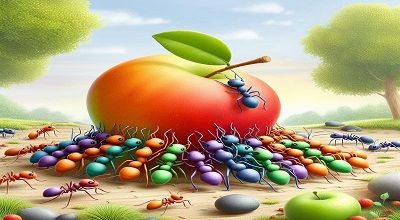Swarm Problem Solving
Swarm problem-solving refers to a collective approach in which a group of entities, often inspired by the behavior of social insects like bees or ants, collaboratively work together to solve a problem. This concept is particularly prominent in the field of artificial intelligence and robotics. The entities in a swarm could be autonomous agents, robots, or even software agents.
Key characteristics of swarm problem-solving include:
- Decentralization: Swarm systems typically operate without a central authority. Instead, individual agents follow simple rules and interact with their neighbors or environment to achieve a collective goal.
- Self-Organization: The system organizes itself based on local interactions and rules rather than relying on external control. Emergent behavior arises from the interactions of individual entities.
- Adaptability: Swarm systems are often adaptable to changing environments or conditions. Agents can adjust their behavior based on the information they receive from their surroundings or other agents.
- Parallelism: Problem-solving relies on parallel processing, where multiple entities work simultaneously to explore and solve a problem. This can lead to efficient and rapid problem-solving.
- Robustness: The decentralized and self-organizing nature of swarm systems often makes them robust in the face of failures or changes in the environment. The system can adapt and continue functioning even if some individual agents fail.
Applications of swarm problem-solving can be found in various fields, such as robotics, optimization, routing, and distributed computing. For example, swarm robotics uses a group of relatively simple robots that work together to accomplish tasks that might be challenging for a single robot.
Swarm intelligence algorithms, inspired by the collective behavior of social insects, are also used in optimization problems, where a group of solutions iteratively refines its performance to find the optimal solution. Examples include ant colony optimization and particle swarm optimization.
Summary
In summary, swarm problem-solving involves the collaborative efforts of decentralized entities following simple rules to achieve complex goals, often resulting in adaptive, efficient, and robust solutions to various problems.
